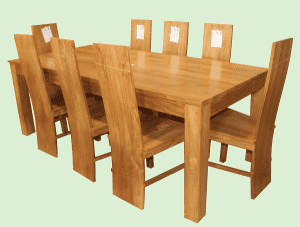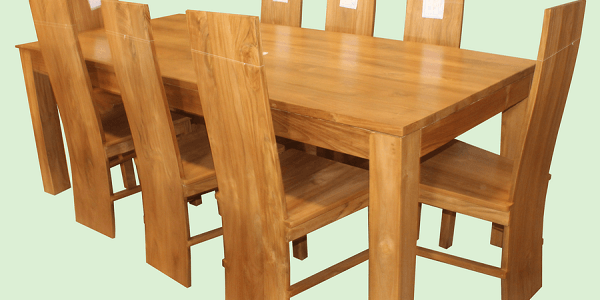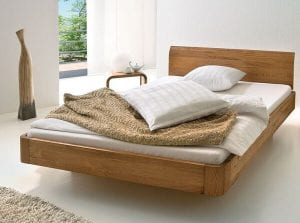
Teak is known for crafting durable, pest-proof furniture with stunning textures
Proper teak is considered one of the finest materials in use across a vast number of commercial industries. Its consistency, weather durability, and natural appearance make it a highly sought after material in furniture manufacturing, shipbuilding, construction and hand carving.
Our choice of Teak Grade
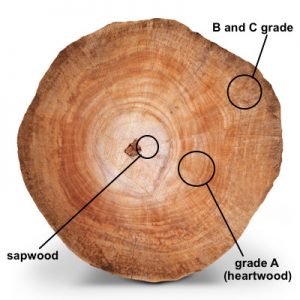
There are three grades of teak that vary in quality, price, and sustainability. At Furniture.mu, we choose to offer B-grade teak products.
A-grade teak is cut from the tree’s centre (the “heartwood”) and is considered the finest teak timber, making up only one-fifth of the total log.
Notable for its golden-to-medium brown coloring and its natural oily sheen, A-grade teak is among the most expensive timbers on the world market.
And for a good reason, as it boasts incredible durability in the face of weather and protects itself against rot, termites, fungus, marine borers, and excess moisture.
However, due to its excessive cost, we here at Furniture.mu offer the more affordable and similarly high-quality B-grade teak.
B-grade teak is taken from the outer layer of the heartwood and makes up one-quarter to one-third of the log. It similarly protects against rot and insects, but requires some protective treatment to match the weather durability of A-grade teak.
However, this is a small effort to make when considering the cost difference of the two grades.
B-grade teak is aged at least 15 years and has a slightly darker hue than A-grade.
C-grade teak is the most inferior teak timber used in commercial markets and frankly…
It shouldn’t be used in commercial markets.
The timber is taken from the outer layer of the log, which is the weakest area. Even with protective treatment, C-grade teak is extremely soft and hardly fit for indoor use – its outdoor durability is virtually non-existent.
Avoid at all cost! It has a short lifespan and simply isn’t worth your time or money.
How to tell C-grade Teak from the rest?
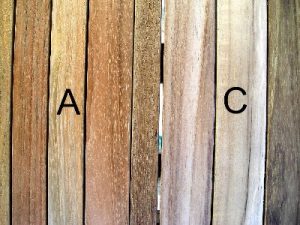
C-grade teak is often harvested at too young an age. As a result, its color is noticeably uneven, with a stark contrast of dark and white shades.
It can also be distinguished by spots of putty or epoxy that fill in where wood is too soft for manufacturing.
Mostly cultivated by local farmers, C-grade teak furniture is often not properly dried or not machine manufactured. So if it’s a bad teak chair, it’s probably made with the worst grade of teak.
C-grade teak is sometimes dipped in chemicals to give it a deceivingly darker and more consistent hue. This detracts further from the wood’s quality as dipped teak can’t be treated with oils. If you’re unsure about the quality of teak furniture, look to see if the manufacturer/distributer is reputable.
At Furniture.mu, we pride ourselves in offering only the finest products at a reasonable price. Our selection of B-grade teak offerings is no exception – we don’t insult our customers with cheap knock-offs.
Maintaining Teak
WASH: Always wash teak with soapy water and make sure not to use a rough brush – you don’t want any scratches on the finish.
UV PROTECTION: Apply a teak sealant. This should protect the teak from long-term sun damage.
BRIGHTEN (optional): If you find your teak fading, purchase a teak brightener to bring it back to life.
*TIP: Watch out for warping doorframes and floors. Keep your home at room temperature and beware of sudden drops in heat from the outside – this can contribute to warping and eventual cracking.
